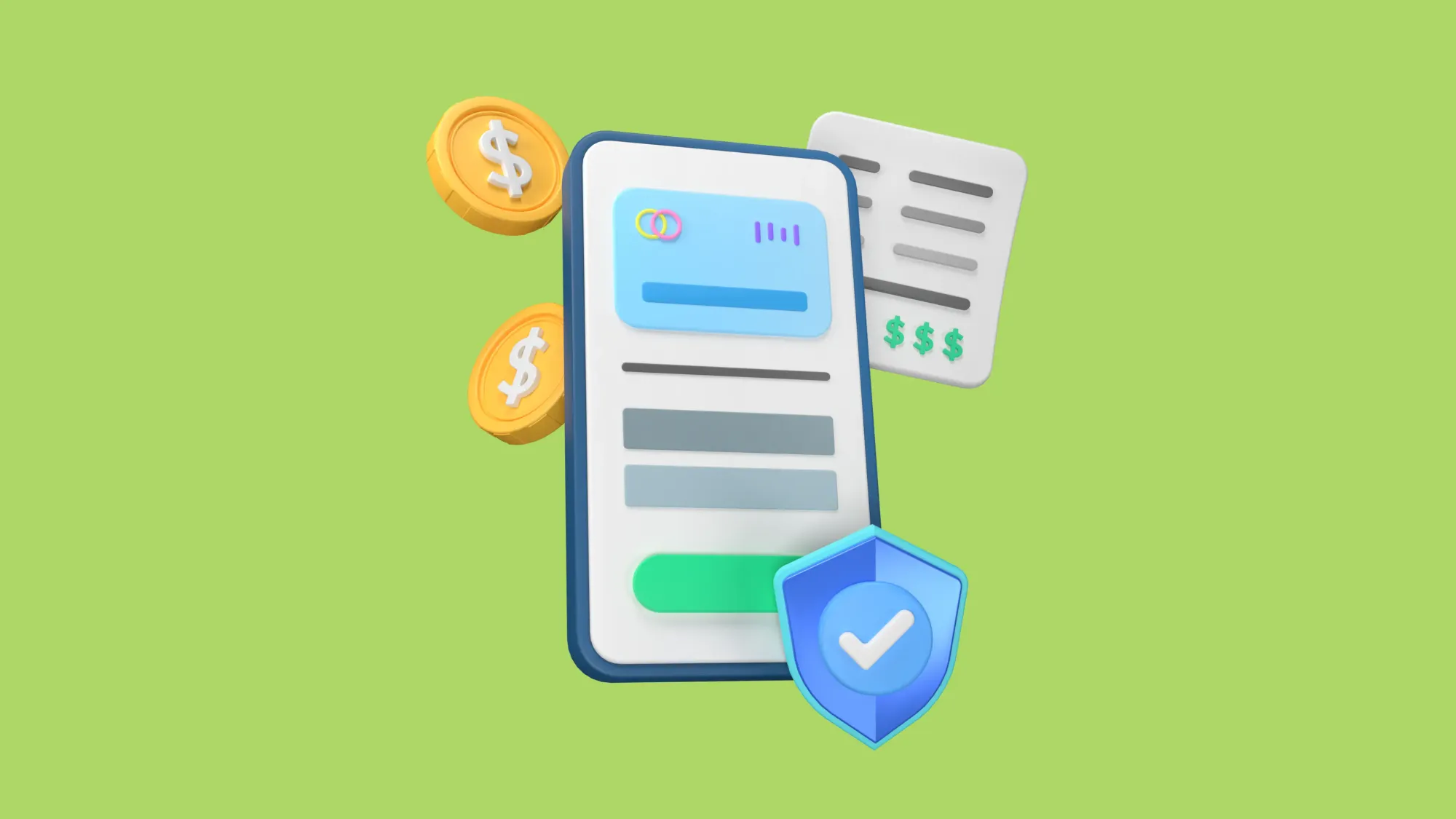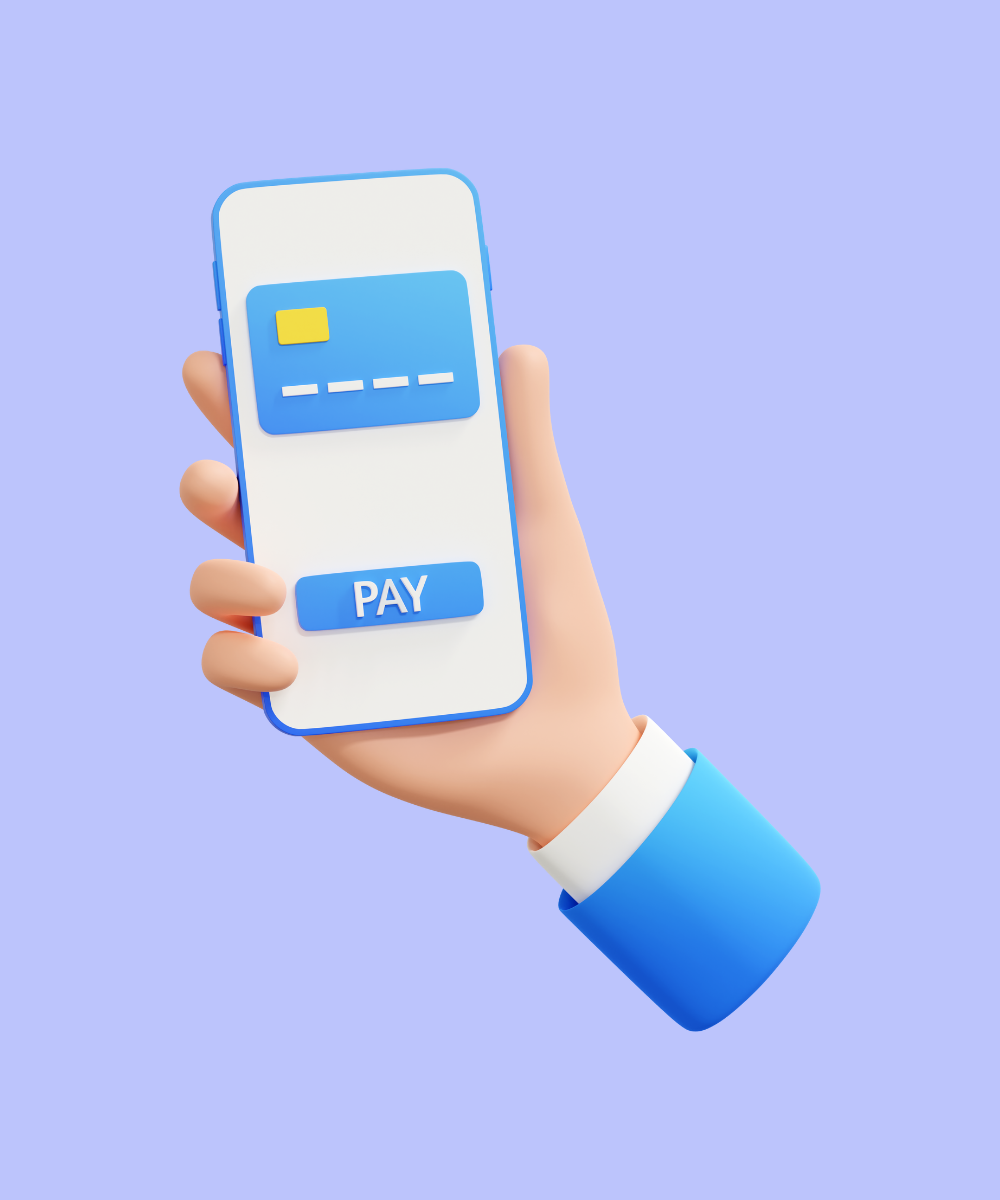In today's digital-first world, the demand for seamless, secure payment methods has skyrocketed. The growth of mobile app development has played a pivotal role in molding the financial tech landscape, particularly in the realm of payment apps. As we delve deeper into 2024, understanding the intricacies of payment app development becomes indispensable for businesses and developers alike.
Market Overview of Payment Apps in 2024
2024 has witnessed mobile payment apps transforming from novelties to necessities in the global financial arena. Recent data from Forbes indicates that over 2 billion people now rely on mobile payment solutions, marking a staggering 25% growth since 2021. Additionally, the global mobile payment market value is projected to reach $12 trillion by 2025, signaling the immense potential of this industry.
- Emerging tech and trends: Nearly 45% of leading payment apps now harness AI for personalized experiences, and around 30% use blockchain for enhanced security. Decentralized ledgers and advanced analytics are becoming standard inclusions.
- User trust and expectations: The drop in mobile payment fraud cases by 10% since 2021 has bolstered user trust. Top-tier apps deliver transactions in under 5 seconds with minimal fees, setting the benchmark for user satisfaction.
- Diverse market offerings: E-commerce-integrated payment apps have grown by 35% in user adoption since 2022. Region-specific apps, catering to local financial nuances, now claim approximately 20% of the market.
Types of Payment Apps
Digital wallets
These are among the most common types of payment apps, allowing users to store multiple card details securely. They enable swift payments for both online and offline transactions.
Examples: Apple Pay, Google Wallet, and Samsung Pay.
Peer-to-peer (P2P) transfer apps
Tailored primarily for sending and receiving money between individuals, these apps have gained immense popularity for their simplicity and speed. Apps like Venmo and Cash App are prime examples.
Bank-integrated apps
Most major banks have their own apps allowing customers to manage their accounts, pay bills, and transfer money. These apps provide a holistic banking experience on mobile, making tasks like checking account balances or setting up recurring payments effortless.
Examples: Chase Mobile and Wells Fargo Mobile.

Point-of-sale (POS) apps
Business-centric, these apps transform mobile devices into payment terminals. Ideal for small businesses or individual sellers, they facilitate the acceptance of card payments using just a mobile device. Square is a prominent player in this category.
Examples: Square, Shopify POS, and PayPal Here.
Cryptocurrency wallets
With the rise of digital currencies like Bitcoin and Ethereum, these apps cater specifically to storing, receiving, and sending cryptocurrencies. They often come with enhanced security features, given the volatile nature of digital assets.
Examples: Coinbase, Binance, and MyEtherWallet.
Merchant payment apps
Tailored for business owners, these apps integrate with e-commerce platforms, facilitating seamless online transactions. They provide tools for tracking sales, managing inventory, and understanding customer behavior.
Examples: Stripe, Square for Retail, and Razorpay.
Unified payment interface (UPI) apps
Prominent in regions like India, these apps facilitate instant bank-to-bank transfers using just a mobile number or a virtual payment address. They're rapidly becoming the preferred mode of digital transactions in areas they operate.
Examples: Google Pay (for UPI), PhonePe, and Paytm.
Bill payment & management apps
Designed to manage and pay all bills in one place, these apps send reminders, schedule payments, and even offer insights into monthly or yearly expenditures.
Examples: Prism, Mint Bills, and MyBills.
International money transfer apps
Focused on cross-border transactions, these apps offer users the ability to send money internationally, often at lower fees than traditional banks.
Examples: Wise (formerly TransferWise), Remitly, and Revolut.
Core Features of a Modern Payment App
In an era defined by rapid technological evolution, payment apps stand at the forefront of the financial revolution. They've transcended mere transactional utilities to become holistic financial management tools. But what truly sets the modern payment app apart? Let's delve into the core features that define these apps in 2024, distinguishing the remarkable from the mundane. Below, we've outlined a table capturing these quintessential elements and their significance.
| Feature | Description |
|---|---|
| User-Friendly Interface | Intuitive designs ensuring users can navigate through options effortlessly. Seamless navigation, logical layout, and a clean interface are vital. |
| Quick Onboarding | Swift and straightforward onboarding processes, allowing users to start transactions within minutes. |
| Instant Peer-to-Peer (P2P) Transfers | Allowing users to send or request money instantaneously from anyone in their contacts or via a registered number or email. |
| Multi-Currency & Cross-Border Transactions | Capability to transact in multiple currencies and send money across borders with minimal fees. |
| Secure Authentication | Features like biometric authentication, two-factor authentication (2FA), and face recognition for enhanced transactional security. |
| Transaction History & Analytics | Enabling users to track transaction history with added analytical insights and budgeting tools based on spending patterns. |
| E-Receipts & Bill Splitting | Digital receipts for easy access and the added convenience of splitting bills among friends or colleagues. |
| Notifications & Real-time Alerts | Real-time push notifications for account balance, transaction status, and suspicious activity alerts. |
| Integration with Other Apps & Services | Versatility through integrations with various other apps and services, enabling users to pay for services, shop online, or book tickets seamlessly. |
| Customer Support & Chatbots | Integrated chatbots for immediate assistance, paired with efficient customer support for issue resolutions. |
Trends Shaping the Payment App Development in 2024
As we venture deeper into 2024, the world of payment apps continues to be influenced by several transformative trends. These trends not only dictate the direction of app development but also set new standards for user expectations. Let’s explore the most influential ones shaping the landscape this year:
Decentralized finance (DeFi) integration
DeFi is no longer a buzzword but a formidable force in the financial sector. Payment apps incorporating DeFi solutions offer users more control over their assets and open doors to various financial services like lending, borrowing, and staking directly from their mobile apps.
Artificial intelligence and predictive analytics
AI-driven insights enable users to manage their finances better. Predictive analytics in payment apps can offer tailored saving recommendations, investment opportunities, and even spending habits analysis, all based on the user's transaction history.

Voice command integrations
With the rise of smart home devices and virtual assistants, voice-activated payments are becoming a reality. This feature allows users to make transactions or check their account balance just by using voice commands.
Cross-border transactions with reduced fees
The demand for seamless international transactions is on the rise. New payment apps are focusing on offering cross-border payments with minimal fees, real-time currency conversion rates, and quicker transaction times.
Advanced biometric authentication
Beyond fingerprint scanning, payment apps are now integrating face recognition, voice recognition, and even iris scanning to enhance security measures. These advanced biometrics ensure that the user's money remains safe while offering a frictionless transaction experience.
Integration with wearable devices
The popularity of wearable tech, like smartwatches and fitness bands, has paved the way for payment apps to integrate with these devices. Users can now make payments on the go, right from their wrists.

Eco-friendly transactions and green initiatives
Awareness about environmental issues is prompting payment apps to adopt sustainable practices. Some apps contribute a part of their transaction fees to environmental causes, while others promote eco-friendly merchants or products within their platforms.
Top Challenges in Payment App Development
The realm of payment app development, while teeming with opportunities, is not without its complexities. The rise of digital payment solutions has ushered in a series of challenges that developers, stakeholders, and businesses need to navigate. Addressing these obstacles is crucial not just for creating a functional app, but for ensuring its long-term success and user trust. Here are some of the most pressing challenges faced by developers in 2024:
1. Ensuring robust security:
With cyberattacks becoming more sophisticated, ensuring the security of user data and financial transactions is paramount.
Details:
- Implementing end-to-end encryption to safeguard transaction details.
- Navigating challenges of secure storage, especially with sensitive information like card details and user credentials.
- Addressing potential vulnerabilities in the app's architecture that could be exploited.

2. Regulatory сompliance:
Different regions have varying regulations pertaining to digital transactions.
Details:
- Keeping abreast of the latest regulations and standards, such as the Payment Card Industry Data Security Standard (PCI DSS).
- Ensuring the app complies with local laws, especially when offering cross-border transaction capabilities.
- Managing user data in line with global data protection regulations, such as GDPR.
3. Seamless user experience (UX):
Users expect payment apps to be intuitive, fast, and reliable.
Details:
- Striking a balance between security measures (like multi-factor authentication) and a smooth user journey.
- Designing for diverse user demographics with varied digital literacy levels.
- Ensuring the app remains responsive and crash-free, especially during high-traffic times.
4. Integration challenges:
Payment apps often need to integrate with various banks, financial institutions, and other third-party services.
Details:
- Overcoming potential compatibility issues, especially with older banking infrastructures.
- Ensuring smooth API integrations for real-time updates and transaction verifications.
- Managing discrepancies that might arise from different financial platforms.
5. Scalability concerns:
As the user base grows, the app should be capable of handling increased transaction volumes without compromising performance.
Details:
- Preparing the app's architecture to handle sudden spikes in usage.
- Ensuring the backend infrastructure can scale efficiently.
- Managing costs associated with scaling, especially when transitioning from a smaller user base.
6. Evolving fraud techniques:
Fraudsters continuously innovate, necessitating a proactive approach to fraud detection and prevention.
Details:
- Implementing machine learning and AI algorithms for real-time fraud detection.
- Continuously updating the app's security measures to counter new fraudulent techniques.
- Educating users about potential scams and safe app usage.
7. Market competition:
The payment app market is saturated, making differentiation a significant challenge.
Details:
- Identifying unique value propositions that resonate with the target audience.
- Staying ahead of competitors by rapidly innovating and releasing new features.
- Managing user expectations in a market where feature-rich apps are the norm.
Best Practices for a Secure Payment Experience
Ensuring users' financial data remains confidential and protected is paramount in the world of payment apps. As cyber threats become more advanced, developers and businesses must adopt strategies that stay one step ahead. Here are the top practices to consider:
End-to-end encryption
By encrypting data from its source and decrypting only at its destination, you ensure that intermediaries or hackers cannot access or interpret the sensitive information. Utilizing advanced encryption standards like AES (Advanced Encryption Standard) is vital for robust protection.
Multi-factor authentication (MFA)
Adding layers to the authentication process can deter unauthorized access. This can be achieved through a combination of biometric verification (like fingerprints or facial recognition), OTPs, and security questions.
Regular security audits
Conduct periodic checks and assessments of the app. Consider engaging with third-party security experts for thorough penetration testing to identify any potential weak spots.
Machine learning & AI for fraud detection
Incorporate AI systems that monitor transaction patterns. By understanding typical user behaviors, these systems can instantly flag and verify any transaction that appears out of the ordinary.
Tokenization of payment information
Instead of storing actual card details or sensitive data, use tokens. If there's a breach, these tokens are useless without the specific system that can decode them.
Regular updates & patches
To counter new threats and vulnerabilities, it's essential to release frequent updates. Ensure users are informed about the importance of keeping their apps updated.
User education
Equip users with knowledge. Inform them about potential security threats, phishing scams, and the best practices they should adopt to stay safe.
Data redundancy & backup
Maintain data integrity by backing up user data securely and having systems in place to ensure continuous uptime, even during unexpected outages.
Secure API endpoints
APIs, which are pathways your app uses to communicate with servers and other services, must be secured against threats like SQL injections and DDoS attacks. Implement measures like rate limiting and robust authentication.
Cost to Develop Payment Apps

When it comes to developing payment apps, the costs can vary significantly based on the app's complexity, features, and other considerations like security measures and integrations. To better understand the costing structure, we can break it down into three levels of complexity: Basic, Intermediate, and Advanced.
1. Basic payment app:
A basic payment app offers limited features, primarily focusing on peer-to-peer transactions.
- Features: User registration, adding bank details, sending/receiving money, transaction history, and basic security measures.
- Design: A simple UI/UX without many animations or intricate designs.
- Development Time: Typically, 2-3 months.
- Estimated Cost: Depending on the region and expertise of the development team, the cost for a basic payment app can range from $10,000 to $25,000.
Example: Apps like Google Pay's initial versions which focused just on P2P payments.
2. Intermediate payment app:
An intermediate payment app introduces additional features and integrations, enhancing both user experience and security.
- Features: Everything from the basic level, plus QR code payments, invoice generation, bill payments, chat support, and enhanced security features.
- Design: A more intuitive design with custom animations and possibly a dark mode.
- Development Time: Generally, 4-7 months.
- Estimated Cost: Given the additional features and complexity, the cost can range from $25,000 to $70,000.
Example: Apps like Venmo that incorporate social feeds and offer more than just basic payment functionalities.
3. Advanced payment app:
An advanced payment app is a comprehensive solution, integrating a broad spectrum of features, ensuring top-notch security, and often incorporating Machine Learning and AI for personalized experiences and fraud detection.
- Features: All previously mentioned features, plus advanced analytics, investment options, loans integration, international transfers, multi-currency support, AI-driven personal finance insights, NFC payments, and more.
- Design: A cutting-edge design, often adaptive based on user behavior, with a plethora of customization options.
- Development Time: Typically, 8-12 months or more.
- Estimated Cost: Given the extensive features and technologies involved, developing an advanced payment app can range from $70,000 to $200,000 or more.
Example: Apps like Revolut or Square's Cash App that offer a holistic financial management experience.
Conclusion
The trajectory of payment apps in 2024 emphasizes the importance of innovation, robust security, and superior user experience. With diverse features, development processes, and challenges highlighted in this discourse, it's evident that the realm of digital payments is both dynamic and demanding.
Monetization models showcase the sector's lucrative potential, while the case studies underline that despite market saturation, innovative approaches can carve out distinctive success stories. The ever-evolving nature of payment apps, intertwined with technological advancements and shifting consumer needs, ensures this domain remains ripe with opportunities.
For businesses aiming to make their mark, understanding these nuances is crucial. As we move forward, ensuring that payment apps are not just transactional tools but holistic experiences will be the winning strategy.
At What the Flutter, we specialize in crafting top-tier mobile solutions, including payment apps, tailored to your unique needs. If you're looking to venture into this dynamic market or enhance your current offerings, get in touch with us. Together, let's build the next game-changer in the world of digital payments.












